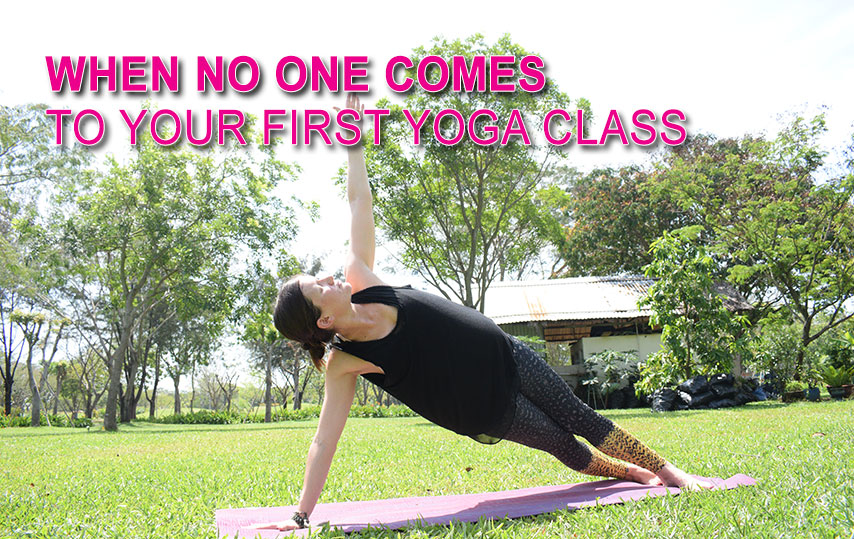When Jiva, the studio I trained at, offered me my own class, I created Mindful Monday. Fresh off my 200-hour training, I relished the idea of holding space for students and their optimism as they sought to start their weeks in the best way they could, by devoting 90 minutes to themselves, their minds and their breathing.
I know Monday morning can be seen as the graveyard shift of exercise classes, but I was quietly hopeful, as the beginning of the week is often when we set our best intentions. It’s the rest of the week where those intentions tend to fall apart…
My sequence was simple – I’m mindful of the limitations I have both as a new teacher, and as a yogi recently returning to practice post-birth. I focused on slow sun salutations and gentle hamstring openers. I practised the sequence at home a few times, murmuring the cues under my breath. I got up early on Monday and set up the studio.
Then, no one came.
I actually felt relief more than anything. In the last 20 minutes before the class was due to start, my nerves were getting jangled. Every time I heard a bike engine or heard voices outside, I’d crane my neck to listen, my heart pounding.
When it became clear that the room was going to stay empty, the relief was replaced by disappointment. I texted my husband to say no one had come and then sat on my mat for a few minutes in the silence.
Then, I remembered what my teacher had spoken about constantly in training. Everything we go through in life is a GGO – a Great Growth Opportunity. It’s up to us to decide how we react to what happens. My class was called Mindful Monday for God’s sake. This was my perfect chance to own my experience and turn it into something good.
So what does one do when no one comes to class?
1.Practice anyway
I came to the studio to do yoga. I came to teach a sequence I designed specifically for this time. So, the first thing I did was go through my class anyway. Alone. I spoke my cues aloud, adjusting the volume of my voice for the room. I checked how well my demonstrations could be seen from different angles in the room. I practiced for myself, giving myself the experience I had wanted to share with other students. And afterwards, I felt better.
2.Reevaluate
With a clearer mind, I began thinking about how I could attract students to this class. What is the point of it? How could I better market it? It was naive to think people would just turn up without me giving them a reason why. I thought of different people I knew in the area and how I could reach out to them to come and share their Monday morning with me in the studio. I still don’t have an answer, but at least I’m searching for one now.
3. Don’t take it personally
This was the hardest part. It’s so easy to take it personally when you’re sitting in an empty studio. I felt embarrassed to tell the others in the team that no one had come. I felt awkward telling Pete, when he’d seen me all psyched for the class.
But when I stopped and thought about it, I realised that it really wasn’t about me. How could it be? The absent students had never met me, never experienced my teaching. This was most definitely not about me, and no good would come of wasting my time on self-pity.
4.Appreciate the gift of time
This was the most important decision I made. Not to let my empty class become wasted time. Anything can be a hidden blessing, and here, I had just been gifted 90 minutes to myself. I was in the peaceful studio alone. I had nowhere else to be. I practised my sequence, then I lay on the lovely props and just chilled. I have two babies under two at home. I lay in silence in that studio and chilled the eff out.
Bio: Stephanie Cantrell
I am a yogi, with over five years personal yoga experience. I completed my YTT- 200 in February 2018, while 37 weeks pregnant. In my spare time I blog about yoga, pregnancy and parenting in Vietnam, where I have been an expat for eight years.

















 Other
Other